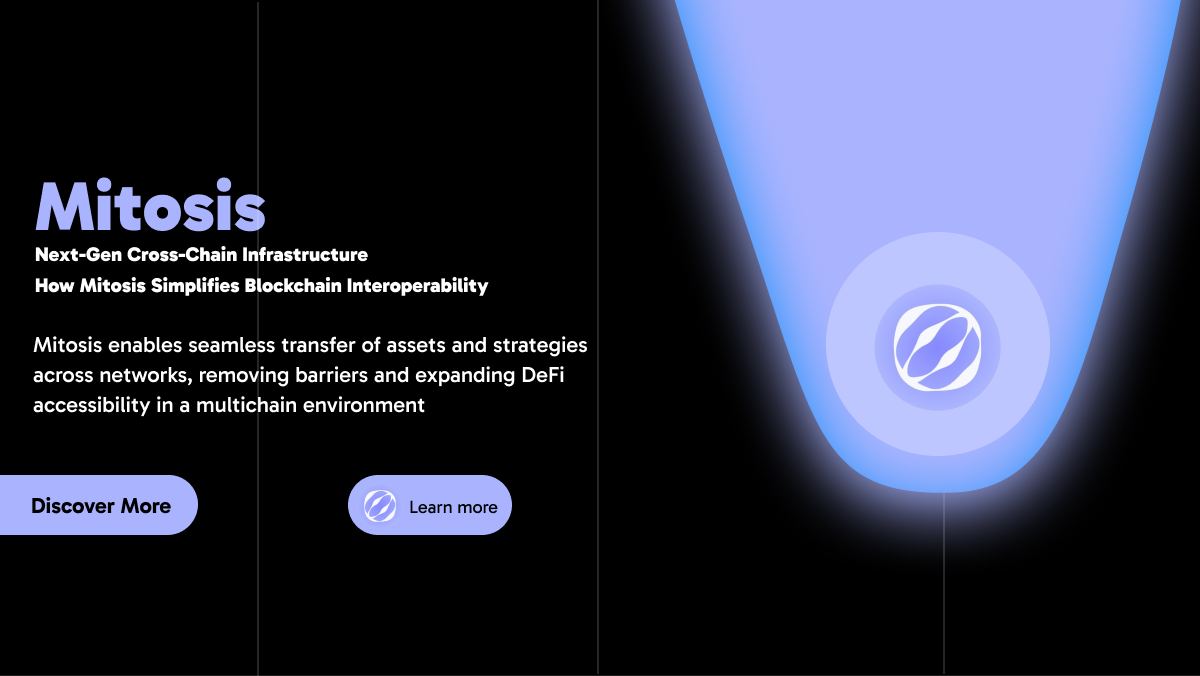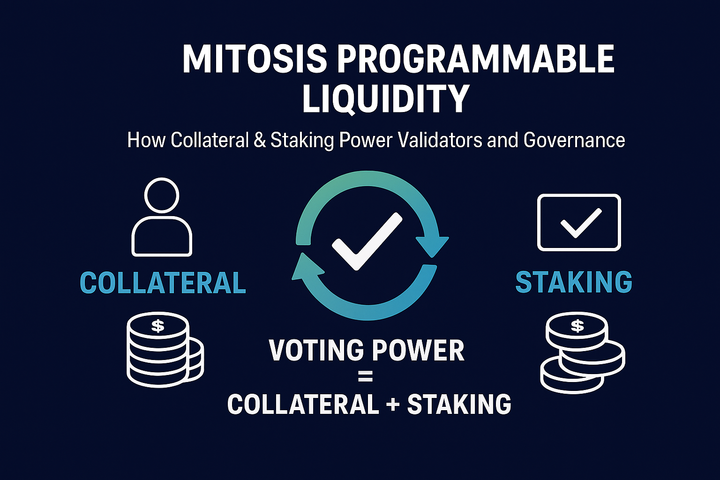Next-Gen Cross-Chain Infrastructure: How Mitosis Simplifies Blockchain Interoperability

Mitosis enables seamless transfer of assets and strategies across networks, removing barriers and expanding DeFi accessibility in a multichain environment.
1. Multichain by Default: A Network-Neutral Architecture
Mitosis is designed from the ground up as a cross-chain protocol without a central chain.
Unlike most DeFi protocols that launch on a single network and later expand via bridges, Mitosis is inherently multichain. There is no “mainnet” — all chains are treated equally. The protocol operates through a native cross-chain matrix where assets, strategies, and even governance can move freely across networks like Ethereum, Arbitrum, Base, and others.
This architecture avoids fragmentation and ensures consistency across all layers of the ecosystem. Learn more in the Mitosis Matrix section of the official documentation.
2. Vanilla Assets: Universal Units of Liquidity
Your tokens become multichain-native by default.
When users deposit assets into Mitosis, they receive Vanilla tokens (such as vETH or vUSDC) in return. These assets are fully liquid within the protocol and can be transferred across supported blockchains without losing yield. This eliminates the need for third-party bridges, which are often slow, complex, or vulnerable.
Transfers are secured by a decentralized set of validators that handle message passing between chains. This ensures cross-chain mobility is fast, secure, and reliable. You can dive deeper into Vanilla Assets in this documentation section.
3. One Strategy, All Networks: True Cross-Chain Scalability
Mitosis allows a single yield strategy to operate across multiple blockchains.
Thanks to the Mitosis Matrix architecture, strategies are deployed as modular contracts that aren't bound to a specific chain. For example, a strategy developed for Arbitrum can receive liquidity from Ethereum or Optimism without needing to be redeployed.
Instead of duplicating strategies across networks, Mitosis enables unified deployment. Users allocate their Vanilla Assets, and the protocol handles the rest — routing capital to wherever it’s needed most. This dramatically reduces overhead for developers and operators alike.
Want to see the technical framework in action? Check out the official GitHub repository.
Conclusion
Cross-chain doesn’t have to be complicated. Mitosis is building a multichain-native infrastructure that allows users, developers, and protocols to move liquidity and strategies across chains effortlessly. It simplifies DeFi creation, expands market reach, and connects previously isolated ecosystems.
With Mitosis, one strategy can span multiple networks, and one token can move freely across chains — this is true cross-chain composability in action.



Comments ()